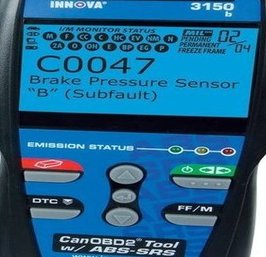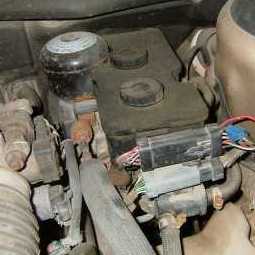
When the ABS light comes on it will stay on until the problem is repaired.
Unlike the check engine light where codes can be erased, ABS systems go through a diagnostic routine when the key is turned on.
If there is a fault in the system, a code is set. If there’s no fault at the time, the light will stay out.
This is known as a constant monitor system. After diagnosis and repairs are made it will not be necessary to clear troubleshooting codes.
The light will go off by itself as it will reset automatically when no faults are detected. This will happen on the first key cycle after the repairs.
The problem for drivers is when the light stays on, what to do next. There are ABS system common problems however, they’re often manufacturer specific in many cases.
As an example certain vehicles may have a tendency to set pressure faults where others are more likely to set wheel speed sensor codes.
This leaves two good places to start diagnosis. The first is gaining access to automotive service bulletins for the specific vehicle.
This does require spending about $20 to access the full database. I have still been unable to find a good free resource that has all the bulletins.
This is an important first step because automobiles of the same make and model tend to have the same malfunctions.
The manufacturer identifies these repair trends and not only provides information on what has gone wrong but how to solve the condition.
Example of System Specific ABS Problems
As an example of some of the common problems you can run into on certain models let’s take a look at Ford vehicles.
As a mechanic that worked for a large fleet company we started noticing a trend of wheel speed sensor codes set on Ford trucks and vans.
The problems on many of these was the wire from the speed sensor was a little too short and when the vehicle was in a hard over turn like in a parallel parking situation the wire pulled on the sensor. You can read more about this issue on my page about Ford ABS problems.

On Dodge vehicles the old Bendix 10 systems were a train wreck. Dodge recalled these and replaced the one piece master cylinder control units on vehicles that set codes.
The interesting thing about this recall is it can be performed multiple times. You can find the systems in late 1980s Dodge Caravan and Plymouth Voyager minivans, but anybody with Bendix 10 systems should visit the dealer.
The dealership can pull all the records on recall services performed in the past. On GM vehicles the most problematic systems were the Kelsey Hayes ABS found on vehicles from the early 1990s.
The electronic brake control module would have solder connection issues that would cause the pump to continuously run. The affected systems would set ABS codes for pump motor malfunction.
On older Pontiac vehicles I ran into control module grounding problems that are discussed further on this page about repairing ABS wiring problems.
How to Pull ABS Codes
It’s hard to get around the fact that knowing why the light is on boils down to extracting the code from the control module. Sometimes you can’t do this without a scan tool that reads ABS.
Several companies are now making somewhat affordable ABS capable scanners. As an example the Innova works on 1996 and newer GM, Ford and Chrysler vehicles.
Before you purchase it make sure your cars are on the application list. Actron and OTC also make tools that pull codes on 1996 and newer cars and trucks for around the same price.The problem with ABS troubleshooting codes has always been there not standardized like they are in the check engine light world. Different numbers can mean different things on different vehicles.
If you have a compatible vehicle and are using the Innova or actron scanner they provide onscreen definitions. In addition here’s a good resources that provides ABS code numbers and definitions.
ABS Common Problems on Old Vehicles
It’s a fact, the older the vehicle the more problematic an anti-lock brake system will be.
Back in the 80s and early 90s the systems looked like some kind of wacky science experiment compared to the technology that is used on today’s automobiles.
To make matters worse, these aging braking systems can see problems caused by heavy rust and corrosion. ABS accumulators and brake lines are made of steel which can rust and corrode leading to small leaks.
When this happens it is difficult for the aging system to maintain its full operating pressure. These rusty old ABS dinosaurs will have pump run for extended periods of time that can set overrun codes.
In these cases the lines or leaking connections will have to be repaired or replaced so the system can build up its full pressure. Unfortunately, sometimes the pump will burn itself out before these problems are fixed.
This requires further investment in fixing an antiquated system. The you fix cars website has a lot of detailed information on the car disc brakes subject.
Give this page a bookmark or share with a friend. Come back and visit the auto repair blog or the homepage to find the latest articles.

